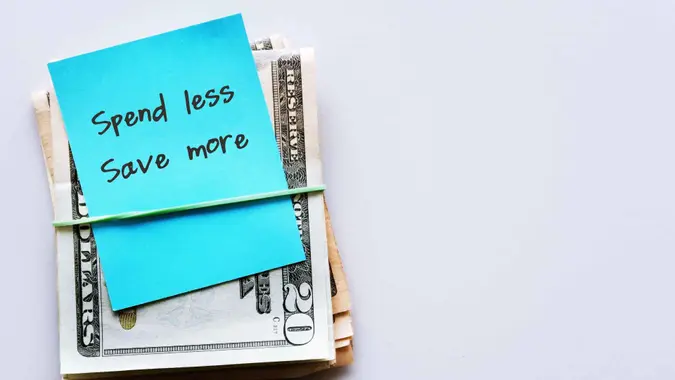Implementing frugal living hacks can help you save money, meet financial goals more easily, and build a more secure future. But it’s important to remain mindful about how these hacks affect your lifestyle. Decluttering and secondhand shopping are great money-saving ideas; however, if they take too much of your time, they should be reconsidered.
1. Get Rid of the Clutter
Frugal living requires employing various money-saving tips and budgeting tricks in order to create a secure financial future. Frugal hacks allow you to save more and spend less without giving up what matters most in life.
From lawn equipment gathering dust in your garage to old family heirlooms occupying valuable real estate in your home, clutter can manifest in various forms. Whatever shape clutter takes for you, letting go of items that don’t add any real value will create more space in your life for things that truly bring meaning and joy. As this process can be challenging, enlist the assistance of a friend in helping you clear out unwanted items from your home. Have them help by walking through and suggesting items to get rid of.
2. Cut Back on Dining Out
Meal prep can help reduce costs associated with eating out or ordering takeout, such as tips, service fees, and delivery charges. By planning ahead for these expenses and saving money in the long run. Living frugally can also reduce waste, which benefits both you and the planet. Frugal living hacks include everything from meal prepping and turning off lights when not needed to unplugging electronics when not in use.
Frugality can help you reach your financial goals more quickly—from saving for retirement to paying down debt. By adopting thrifty practices in everyday life, frugal living strategies provide more spending flexibility that enables you to reach those objectives faster.
3. Downsize your Home
Downsizing can be an enormous financial move, but it could open up money for travel or retirement savings. A smaller home might require lower mortgage and utility payments as well as reduced maintenance expenses—plus, it might even make life easier for those with physical limitations.
Simplifying your living space can help you embrace minimalism and only purchase items that add real value to your life. Using a one-in, one-out approach for new purchases simplifies maintaining a clutter-free lifestyle, reduces energy bills by using less electricity, and eliminates storage fees.
4. Shop Secondhand
One person’s trash is another’s treasure, so don’t be intimidated by secondhand shopping. Thrift stores, consignment shops, and online marketplaces can offer great finds at a fraction of their original cost—and help reduce waste as an added benefit!
Do-it-yourself projects can save money long term. From home repairs to handcrafted greeting cards, DIY projects can help cut costs and reach financial goals more effectively while being fun and rewarding!
5. Borrow Instead of Buying
Frugality can have both financial and environmental advantages. By cutting consumption and encouraging reuse, it can save money and lower carbon footprint. Setting long-term money goals is crucial when setting out to save. Setting such targets will give you something tangible to work toward and keep you inspired to make more frugal decisions moment by moment.
If you want to become frugal, creating and adhering to a budget can help. By employing household budgeting hacks such as cashback apps and automatic bill payments, cutting cable TV service, or prioritizing debt repayment, you can save more and spend less without feeling stress-filled.
6. Make Your own Cleaning Products
Cleaning products can be expensive, filled with harmful chemicals that not only damage your health but also your wallet. Making your own cleaning products is an easy frugal living hack that will save money while helping save the environment!
One effective strategy to save is tracking expenses and cutting back where possible, including downsizing your home if that makes financial sense. Otherwise, tracking spending habits and learning how to perform repairs yourself might also prove effective ways of saving.
7. Take up a Clothing Challenge
Employing frugal living hacks can help you save money and meet your financial goals more easily, but only incorporate those that fit with your lifestyle—any savings hack that reduces family time or causes undue stress is likely not worth your consideration.
Marie Kondo advises us to only keep clothing that sparks joy; another way of cutting costs is reducing food waste; in the United States alone, over 130 billion pounds of food waste is dumped each year—which impacts both our wallets and the environment.
8. Reduce Food Waste
Becoming more frugal requires cutting back on waste. Cutting food waste at the consumer level could save households around $1,800 each year while simultaneously cutting greenhouse gas emissions. Make a meal plan and shop according to it, using up any leftovers before they go bad and freezing anything that may soon expire. This will help minimize food waste.
Save money when grocery shopping by opting for bulk sizes when possible and eating more meatless meals. Other cost-cutting measures include using up your coupons before they expire, unplugging appliances before turning the thermostat back on, selling old items online instead of auctioning them off, and line drying your clothes instead of using a dryer.
9. Practice Mindful Spending
Frugal living can offer numerous financial and non-financial advantages. But it’s essential that any frugal hacks you employ do not compromise your happiness or well-being.
One effective strategy to reduce discretionary spending is focusing on cutting back on discretionary items like dining out, entertainment, and hobbies that don’t serve a practical purpose—like dining out or entertainment events or hobbies—although these things don’t have to be essential; they may become sources of stress and anxiety. Mindful meditation practices can help curb impulse buying while keeping focus on what matters to you most; doing this may also prevent that sinking feeling each month when looking over your bank statement or Venmo activity report.




